eReefs Regional Models Workshop Presentations - April 2016
The eReefs Regional Models Workshop organised in Townsville on 12-14 April 2016 aimed to introduce the marine modelling suite delivered collaboratively by CSIRO and AIMS to a broad audience of expert scientists and users. This modelling package includes the SHOC hydrodynamic (4 km and 1 km resolutions), sediment transport and biogeochemistry models.
Detailed technical report on these products can be found at https://research.csiro.au/ereefs/models/
Attended by eReefs scientists, eReefs Operations Committee members and User Reference Group representatives, Queensland and Australian Government representatives, independent experts/scientists and stakeholders/users, the key objectives of the workshop were to:
- Communicate on the SIEF Program outcomes and deliverables to both ‘non-eReefs’ scientists and stakeholders/users
- Review the performance of models in the context of current and future user needs
- Discuss applications and integration within current initiatives (LTSP, RIMReP, Water Science Taskforce projects, Regional Report Cards)
- Identify limitations, improvement areas and research gaps
PDF versions of the presentations can be found below. Please contact us if you would like more information.
Day one – Technical session – Introduction
Day one – Technical session – Description of the models
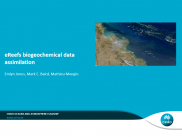 Data assimilation techniques to improve estimations of the biogeochemical state of the GBR
Data assimilation techniques to improve estimations of the biogeochemical state of the GBR
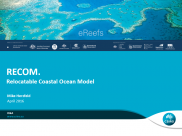 Description of the Relocatable Coastal Ocean Model configuration, implementation and performance
Description of the Relocatable Coastal Ocean Model configuration, implementation and performance
Day two – Technical session – Performance and skill of the models
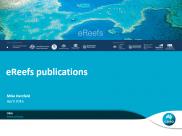 Publications arising from the research and development of hydrodynamic models for the GBR
Publications arising from the research and development of hydrodynamic models for the GBR
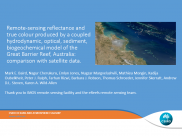 Publications arising from the research and application of biogeochemical models for the GBR
Publications arising from the research and application of biogeochemical models for the GBR
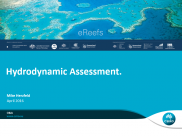 Overview of the skill assessment of the hydrodynamic component of eReefs regional models
Overview of the skill assessment of the hydrodynamic component of eReefs regional models
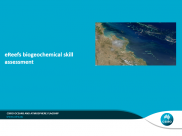 Overview of the skill assessment of the biogeochemical component of eReefs regional models
Overview of the skill assessment of the biogeochemical component of eReefs regional models
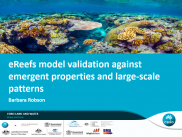 Overview of model validation against emerging properties and large-scale patterns
Overview of model validation against emerging properties and large-scale patterns
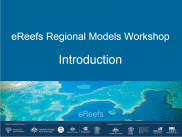 Brief overview of the workshop agenda, current status of the eReefs Project and summary of research deliverables
Brief overview of the workshop agenda, current status of the eReefs Project and summary of research deliverables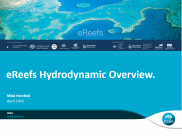 Detailed description of the hydrodynamic model configuration including bathymetry, rivers, forcing, and outputs
Detailed description of the hydrodynamic model configuration including bathymetry, rivers, forcing, and outputs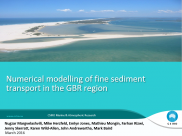 Detailed description of inorganic sediment processes underpinning the sediment transport model configuration
Detailed description of inorganic sediment processes underpinning the sediment transport model configuration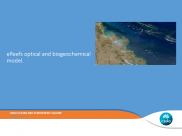 Detailed description of the biogeochemical (water quality) model including optics, gas exchange, nutrients, plankton and benthic plant dynamics
Detailed description of the biogeochemical (water quality) model including optics, gas exchange, nutrients, plankton and benthic plant dynamics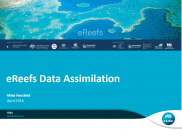 Data assimilation techniques applied to the hydrodynamic modelling components of the eReefs regional models
Data assimilation techniques applied to the hydrodynamic modelling components of the eReefs regional models